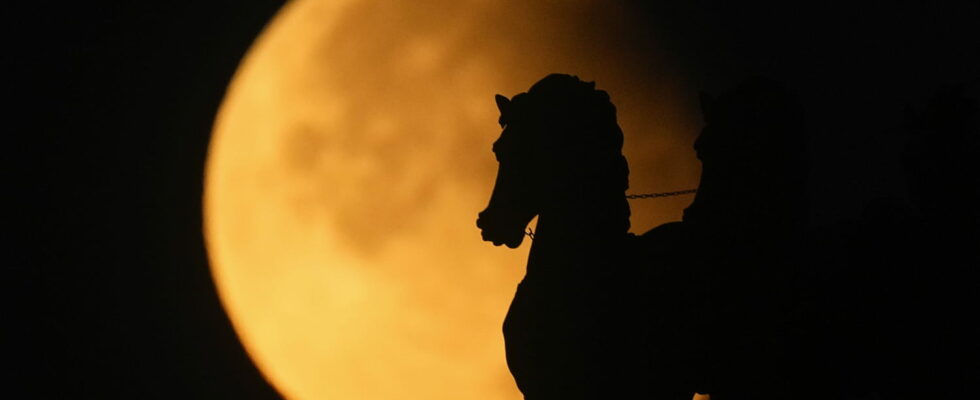MOON ECLIPSE. A partial lunar eclipse was observed throughout metropolitan France and overseas this Wednesday, September 18, 2024. Did you miss the show?
[Mis à jour le 18 septembre 2024 à 11h40] On the night of Tuesday 17 to Wednesday 18 September 2024, the last eclipse of Moon of the year. Astronomy enthusiasts were able to witness the maximum spectacle at 4:44 in the morning. But although it was visible from mainland France, its observation was not exceptional since only a small edge of the lunar disk was nibbled by the Earth’s shadow.
The lunar eclipse was, however, admired by millions of people around the world, whether in France, overseas territories, but also in the Atlantic Ocean, an eastern part of the Pacific Ocean, South America, eastern North America, Western Europe and West Africa, with the exception of eastern Asia, Australia and the western Pacific. The Moon was closer to Earth than usual, at 357,530 kilometres, which gave it a red-orange colour in some photos.
Relive the lunar eclipse of September 18, 2024 in video
Didn’t have the courage to stay up all night to watch the show? It is still possible to watch the lunar eclipse through this video replay:
When is the next lunar eclipse?
The next lunar eclipse in France will be total and will take place on Friday March 14, 2025. Good news, it will be partly observable from France.
What is a lunar eclipse?
It is important to emphasize that the astronomical phenomenon of a lunar eclipse is only possible when the Moon is full. A lunar eclipse can only take place when the Moon is at
If the sky is clear, there is no problem observing a lunar eclipse with the naked eye, without any danger (unlike a solar eclipse) and without any special equipment. We advise you to position yourself towards the clear horizon and to turn towards the southwest. The observation location must be located far from any light pollution (at the top of a hill, on a beach, etc.) As for a super moonin case you find yourself in an area where clouds obscure your visibility, you can arm yourself with your telescopeof yours binoculars or a pair of astronomical glasses to observe the lunar eclipse even better.
For those who wish to immortalize the phenomenon, you can equip yourself with a standard 50 mm lens as well as lenses with a longer focal length (between 200 mm and 2,700 mm on a full-frame sensor). The important thing is to have a tripod to avoid motion blur. Using a telephoto lens is obviously ideal so that the moon fits entirely into the frame, but for photographers with a small focal length, you can create an eclipse trail (successive superimpositions of the different phases of the eclipse on the same photograph). Given the low light during the lunar eclipse, set your camera to a medium to high sensitivity depending on the phase of the eclipse, as well as a large aperture.
